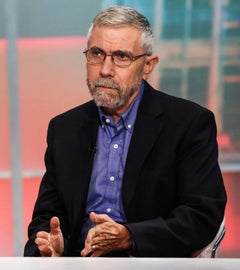MI SELECCIÓN DE NOTICIAS
Noticias personalizadas, de acuerdo a sus temas de interés

The empty-store phenomenon is fascinating, and cries out for a bit of modeling, which I won’t do right now. But it is clear that it’s part of a broader story of big money moving into desirable neighborhoods, and in the process destroying what makes them desirable. And this, in turn, has me thinking, somewhat hazily, about the relationship between inequality and urbanism. Not as a diatribe - I think it’s a fairly complex topic - but just as an interesting issue, especially if you’re in the process of moving into a big city.
Some thoughts: First, when it comes to things that make urban life better or worse, there is absolutely no reason to have faith in the invisible hand of the market. External economies are everywhere in an urban environment. After all, external economies - the perceived payoffs of being near other people engaged in activities that generate positive spillovers - are the reasons cities exist in the first place. And this, in turn, means that market values can very easily produce destructive incentives.
When, say, a bank branch takes over the space formerly occupied by a beloved neighborhood shop, everyone may be maximizing returns, yet the disappearance of that shop may lead to a decline in foot traffic, contribute to the exodus of a few families (and their replacementby young bankers who are never home) and so on in ways that reduce the whole neighborhood’s attractiveness.
On the other hand, an influx of well-paid yuppies can help support the essential infrastructure of, say, hipster coffee shops (you can never have too many hipster coffee shops), ethnic restaurants and dry cleaners, and help make the neighborhood better for everyone.
What does history tell us? Politically, I’d like to say that inequality is bad for urbanism. But that’s far from obvious.
The author and activist Jane Jacobs wrote “The Death and Life of Great American Cities” right in the middle of the great postwar expansion, an era of widely shared economic growth, relatively equal income distribution, empowered labor - and collapsing urban life, as white families fled the cities and a combination of highway building and urban renewal destroyed many neighborhoods.
And when a partial urban revival began, it was arguably associated with forces driven by or associated with rising inequality.
Affluent types in search of a bit of cool - probably 5 percenters rather than 1 percenters - drove gentrification and revival in urban cores; in New York, at least, large numbers of poorly paid but striving immigrants drove the revival of outer borough neighborhoods like Jackson Heights and Brighton Beach.
Still, we’re now arguably looking at something new, as the truly rich - domestic malefactors of great wealth, but also oligarchs, princelings and sheikhs - buy up prime real estate and leave it vacant, creating luxury-shopping wastelands at best (I know, snobbish Upper West Side bias), and expensive ghost districts at worst.
Rendir cuentas, entonces, no es solo presentar balances. Es demostrar que la alianza público-privada puede ser una herramienta ética y eficaz para cuidar la ciudad y activar el territorio
Se da más valor a los comentarios de los selfituristas que a lo que te pueda recomendar un profesional que conoce la atracción, el monumento, la ciudad… y la ha visitado unas cuantas veces